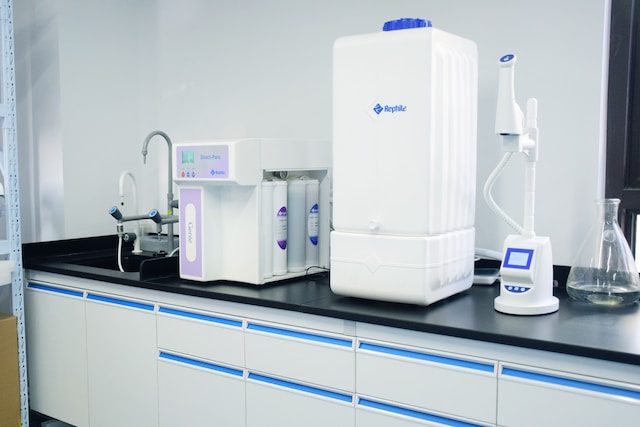Ehlers-Danlos Syndrome Physical Therapy: Exploring the Advantages
The connective tissue disorder Ehlers-Danlos Syndrome (EDS) is exceptionally uncommon. It affects the collagen in your skin, tendons, ligaments, muscles, and blood vessels.
When your body’s collagen is compromised, joints become unstable and hyper-extend past their normal range resulting in chronic pain and injury.
Strengthening
Physical therapy is a form of health care that helps people with medical problems like Ehlers-Danlos syndrome. It can involve learning special exercises that improve mobility and coordination, as well as helping to increase the amount of physical activity in a person’s daily life.
Physical therapists can also help patients who need to learn to do specific movements in a particular order or have difficulty with balance or muscle strength. They will also use manual therapy techniques to improve blood flow and stabilize joints.
A lot of the time, physical therapists will start with strengthening exercises. These can be done at home or during a therapy session.
The benefits of this type of exercise include improved flexibility, better movement coordination, and stronger muscles. However, you must remember to do them regularly for the best results.
Collagen, the protein in the body that binds tissues, is impacted by the connective tissue illness known as Ehlers-Danlos syndrome. When the collagen is abnormal, it can cause various symptoms. These include flexible joints, stretchy skin, and fragile blood vessels.
Pain Management
By teaching you a range of pain-management techniques, physical therapists can assist you in managing your pain and provide Ehlers-Danlos syndrome treatment. With these exercises, you can decrease joint swelling, increase blood flow, and stabilize your range of motion.
Ehlers-Danlos syndrome is a hereditary disorder of collagen that affects the strength and flexibility of connective tissue. It includes skin, tendons, ligaments, and muscles.
Patients with Ehlers-Danlos syndrome often have joint hypermobility, fragile skin, and chronic pain. They also have a higher risk of early-onset arthritis and other severe health conditions.
The best treatment for Ehlers-Danlos syndrome involves a comprehensive approach to pain management. It includes lifestyle modifications, education, reassurance, and manual therapy techniques.
During physical therapy, your therapist will teach you how to perform low-impact strengthening exercises and joint mobilization techniques. These exercises can decrease pain, strengthen weak and deconditioned joints and muscles, and improve your range of motion.
Your physical therapist will also guide you in modifying your activities to avoid injuries. In addition, they may recommend splints and other protective and supportive braces to keep your limbs from overstretching and causing damage.
Flexibility
The ability to move through the full range of motion in your joints is among the essential factors in determining physical wellness. It increases muscle coordination, reduces pain, and helps maintain healthy joints.
During your physical therapy sessions, your therapist will help you improve flexibility and mobility through exercises focusing on joint mobilization, stretching, and functional strengthening. Your therapist will also help you learn proper body mechanics and posture when performing everyday activities.
Various flexible exercises can improve your strength and balance and reduce pain and stiffness associated with Ehlers-Danlos syndrome (EDS). Your therapist will assist you in learning how to carry out these motions effectively and safely, which may make it simpler for you to continue living an active and healthy lifestyle.
Stretching is a terrific approach to increase flexibility, but it works best after warming up your muscles. You can achieve this by exercising for 5 to 10 minutes at a low intensity while lightly jogging, riding, or walking.
Many factors may hamper flexibility, including connective tissue, muscle mass, extra body fat, and bone shape. Aging also significantly impacts flexibility, which can deteriorate elastin and collagen fibers that support joint cartilage.
Joint Stability
When you have Ehlers-Danlos syndrome, your connective tissues, such as your skin, ligaments, tendons, and blood vessels, are less potent than average. This weakness can cause joints to become unstable, leading to injury and pain.
During physical therapy, your therapist will focus on joint stability exercises designed specifically for patients with Ehlers-Danlos syndrome. These exercises can strengthen the muscles and tendons around your joints, making them stronger and less prone to injuries.
Your therapist will consider your personal goals to determine the right strength and stability exercises for you. They may use diagnostic ultrasound to see your joints and muscles in motion to help pinpoint the areas that need the most attention.
You and your therapist will also work to comprehend the root causes of your hypermobility. For example, if you’re having problems with your elbows, you’ll be taught how to work with the muscles around those joints to strengthen them, so they don’t become unstable.
Balance
As a result of EDS’s impact on the body’s connective tissues, joints may become unstable. Injuries and pain may result from this.
As a result, physical therapy can help patients with EDS strengthen muscles around their problem joints and prevent injuries from occurring. In addition, therapists will teach their clients new ways to balance themselves.
They can learn exercises such as balancing on one leg, maintaining kneeling positions, and using Swiss balls. It can increase proprioception and kinaesthetic sense, which are crucial for stability.
The therapists will also educate them on stretching their joint’s range of motion without stretching it past the point where their ligaments stop the movement. It is vital because the ligaments are the main culprit when a joint starts to move too far, which can cause injury.
The therapists will then teach them how to incorporate this into their regular exercise routines. These workouts will also help them to reduce their pain and discomfort from instability.









